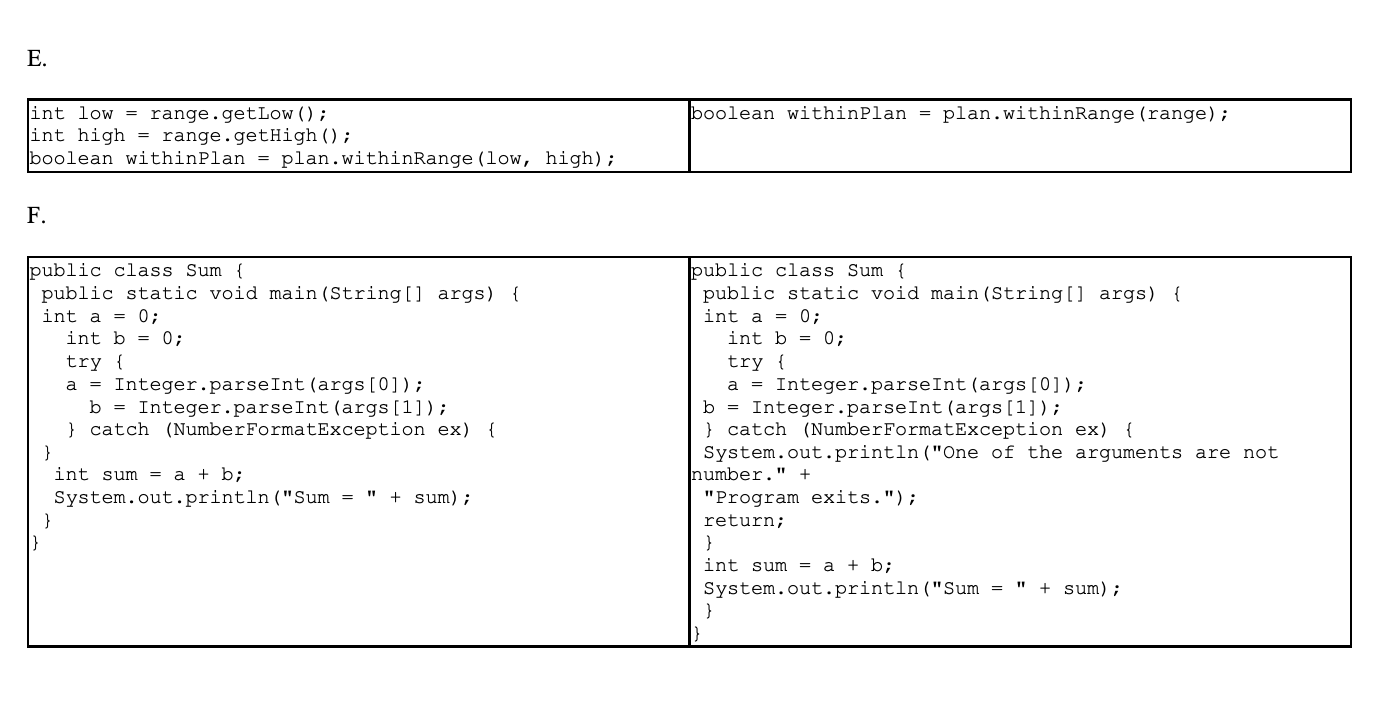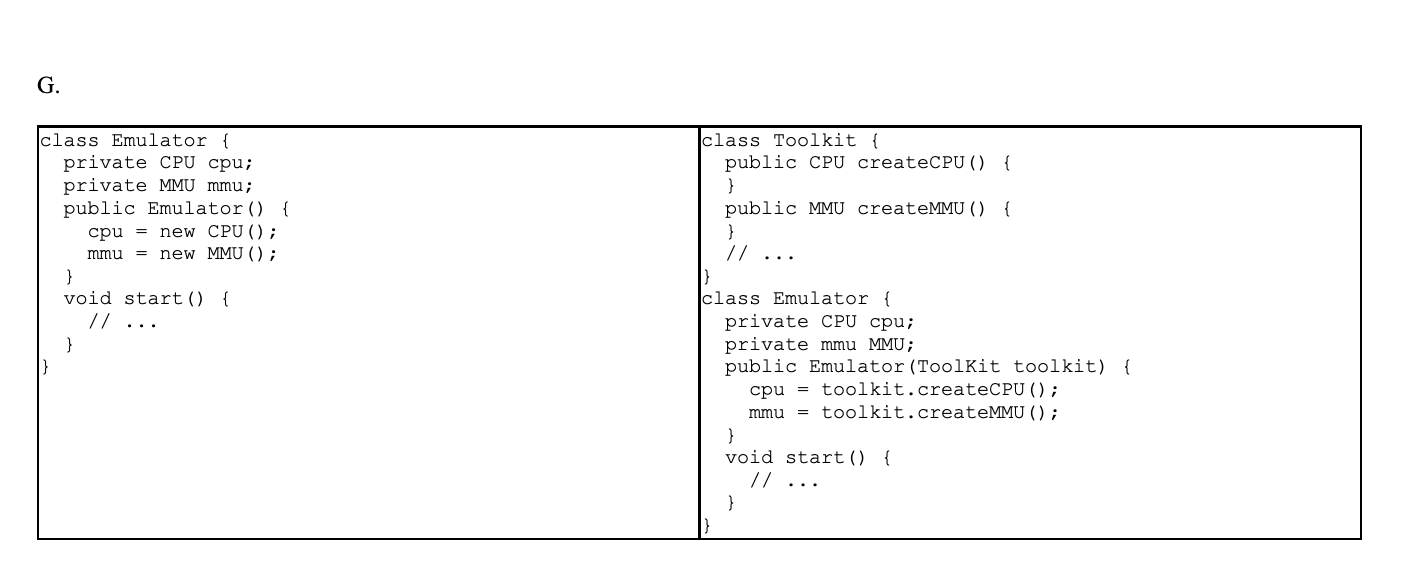


2. For each of the following refactorings, a. state the primary design principle that is being improved in the code that is shown: abstraction, encapsulation, modularity, hierarchy, separation of concerns, or none (no design improvement made) and b. provide a 1 to 2 sentence explanation how the code was improved regarding that design principle. E. boolean withinPlan = plan.withinRange (range); int low = range.getLow(); int high range.getHigh(); boolean withinPlan = plan.withinRange (low, high); = F. public class Sum public static void main(String[] args) { int a = 0; int b = 0; try { a = Integer.parseInt (args[0]); b = Integer.parseInt (args [1]); } catch (NumberFormatException ex) { } int sum = a + b; System.out.println("Sum + sum); } public class Sum { public static void main(String[] args) { int a = 0; int b = 0; try { a = Integer.parseInt (args[0]); b = Integer.parseInt (args[1]); } catch (Number FormatException ex) { System.out.println("One of the arguments are not number." + "Program exits."); return; } int sum = a + b; System.out.println("Sum = + sum); } G. class Toolkit { public CPU createCPU() { } public MMU createMMU () { } class Emulator { private CPU cpu; private MMU mmu; public Emulator() { cpu = new CPU(); mmu = new MMU (); } void start() { 11 ... } 1/ ... class Emulator { private CPU cpu; private mmu MMU; public Emulator (Toolkit toolkit) { cpu = toolkit.createCPU(); mmu = toolkit.createMMU(); } void start() { 11 ... } 2. For each of the following refactorings, a. state the primary design principle that is being improved in the code that is shown: abstraction, encapsulation, modularity, hierarchy, separation of concerns, or none (no design improvement made) and b. provide a 1 to 2 sentence explanation how the code was improved regarding that design principle. E. boolean withinPlan = plan.withinRange (range); int low = range.getLow(); int high range.getHigh(); boolean withinPlan = plan.withinRange (low, high); = F. public class Sum public static void main(String[] args) { int a = 0; int b = 0; try { a = Integer.parseInt (args[0]); b = Integer.parseInt (args [1]); } catch (NumberFormatException ex) { } int sum = a + b; System.out.println("Sum + sum); } public class Sum { public static void main(String[] args) { int a = 0; int b = 0; try { a = Integer.parseInt (args[0]); b = Integer.parseInt (args[1]); } catch (Number FormatException ex) { System.out.println("One of the arguments are not number." + "Program exits."); return; } int sum = a + b; System.out.println("Sum = + sum); } G. class Toolkit { public CPU createCPU() { } public MMU createMMU () { } class Emulator { private CPU cpu; private MMU mmu; public Emulator() { cpu = new CPU(); mmu = new MMU (); } void start() { 11 ... } 1/ ... class Emulator { private CPU cpu; private mmu MMU; public Emulator (Toolkit toolkit) { cpu = toolkit.createCPU(); mmu = toolkit.createMMU(); } void start() { 11 ... }









